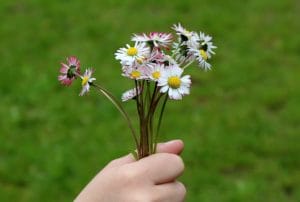What makes people feel loved? It’s not always what you think

Do you feel loved? Saida Heshmati wants to know. And if you don’t, she has committed herself to figuring out how best to get you there.
As one of CGU’s newest faculty members — she joined the School of Social Science, Policy & Evaluation as an assistant professor of positive developmental psychology in October 2018 — Heshmati pursues an academic passion that involves the study of “human flourishing across the lifespan.”
Which means, unlike much of her professional cohort, she eschews the debilitating, maladaptive, and pathological to focus on the feel-good aspects of human development: affection, positive relationships, everyday well-being, and, yes, love.
A psychology professor explores the oft-overlooked dimensions of love.
“What we are interested in is optimal development over time,” Heshmati said of positive developmental psychology, a relatively new discipline birthed around the turn of the millennium that embraces a more humanistic angle on mental health than the traditional focus on negative psychic expressions like depression, sociopathy, and dissociative disorders.
In pursuit of this, Heshmati and her colleagues explore questions such as How can we help people age in the best possible way? and What are the unique positive elements that help people flourish in each specific developmental life stage?
“I’m less interested in trait-level concepts than day-to-day experiences people encounter that help them flourish,” she said. “How can we maximize those types of behaviors and states in their lives?”

Heshmati was born and raised in northeastern Iran in the city of Gorgan, where her mother and brother still run an English-language institute. After acquiring her bachelor’s in English literature, Heshmati moved to the United States and earned both a master’s degree and a PhD in educational psychology from the University of Arizona.
Three years of postdoctorate work in quantitative developmental methods at Penn State’s College of Health & Human Development led to a teaching position at George Mason University in Washington, DC, and her subsequent appointment to CGU, where she teaches “Positive Relationships Across the Lifespan,” “Positive Education,” and a transdisciplinary course called “The Science of Human Relationships” that encourages dialogue among students from various fields.
“It all started from my interest in looking at people’s everyday experiences and not just those bold experiences we have along the trajectory of life,” Heshmati said. “One such experience is a momentary feeling of love. We don’t really know when it is that people feel loved in their day-to-day interactions or whether those moments lead to higher well-being.”
While a research scholar at Penn State, Heshmati co-authored an article published in the Journal of Social and Personal Relationships in August 2017 titled “What does it mean to feel loved: Cultural consensus and individual differences in felt love.” The piece struck a nerve: It was downloaded thousands of times by readers intrigued by the researchers’ exploration of whether Americans agreed on what makes people feel loved.
Is feeling loved crucial to our daily well-being? Absolutely, says Heshmati.
In their study, Heshmati and her colleagues asked nearly 500 respondents aged 18 to 93 to rate a wide spectrum of 60 romantic (making love), nonromantic (someone confides in you), and neutral (the sun is shining) everyday scenarios as to whether they thought most people would feel loved in the given circumstance.
The results showed that, generally, affectionate and emotionally supportive nonromantic events such as a child snuggling up to a person, a dog showing excitement when his owner arrives home at the end of the day, or someone showing compassion for a person during a difficult time are more consistently agreed upon as loving than the traditional flowers-hugs-kisses romantic behaviors.
Meanwhile, the study indicated that controlling behaviors (someone wants to know where you are at all times) are agreed upon as non-loving, and men tend to be less knowledgeable about the cultural consensus than women.
“We seem to be disregarding those types of nonromantic experiences,” she said. “We may think of them as happy but not necessarily loving moments, yet they seem to create a moment of positivity resonance between the two people involved.”

Ultimately, Heshmati believes that once she better understands the ways people can instill these loving feelings in themselves and in others during various phases of life, she can apply specific interventions to promote these aspects of a person’s well-being. (She stresses that the study’s results would undoubtedly be very different in other cultures and at different moments in the lifespan.)
Of particular concern are young adults and those transitioning to college, a developmental window with unique challenges and methods of connection that can help or hinder students.
Heshmati has co-authored a new article under review based on a study that looked at the most important elements bolstering the “network of well-being” in young adults’ daily lives and found that a key factor is positive relationships. She and a colleague are using this finding in a grant to create an online mindfulness intervention reinforced by positive relationships among pairs of first-year undergraduates and graduate students at CGU.
“Positive relationships are very important in this age group, and young students can be a force of support for each other as they embark on this journey,” Heshmati said. “Research shows that these transitions take a toll on young adults. We’re hoping we can make a difference in their day-to-day lives.”
The best part of all this focus on feeling good? It’s had a profound effect on Heshmati’s approach to her own life. She admits that she can’t very well educate others about how to achieve a happier life if she isn’t living her own in a thriving way; so she strives to surround herself with positive relationships and sets aside quiet, creative hours for drawing and oil painting.
“It’s kind of like the oxygen mask on the airplane,” she said. “You put it on yourself first and then on others.”